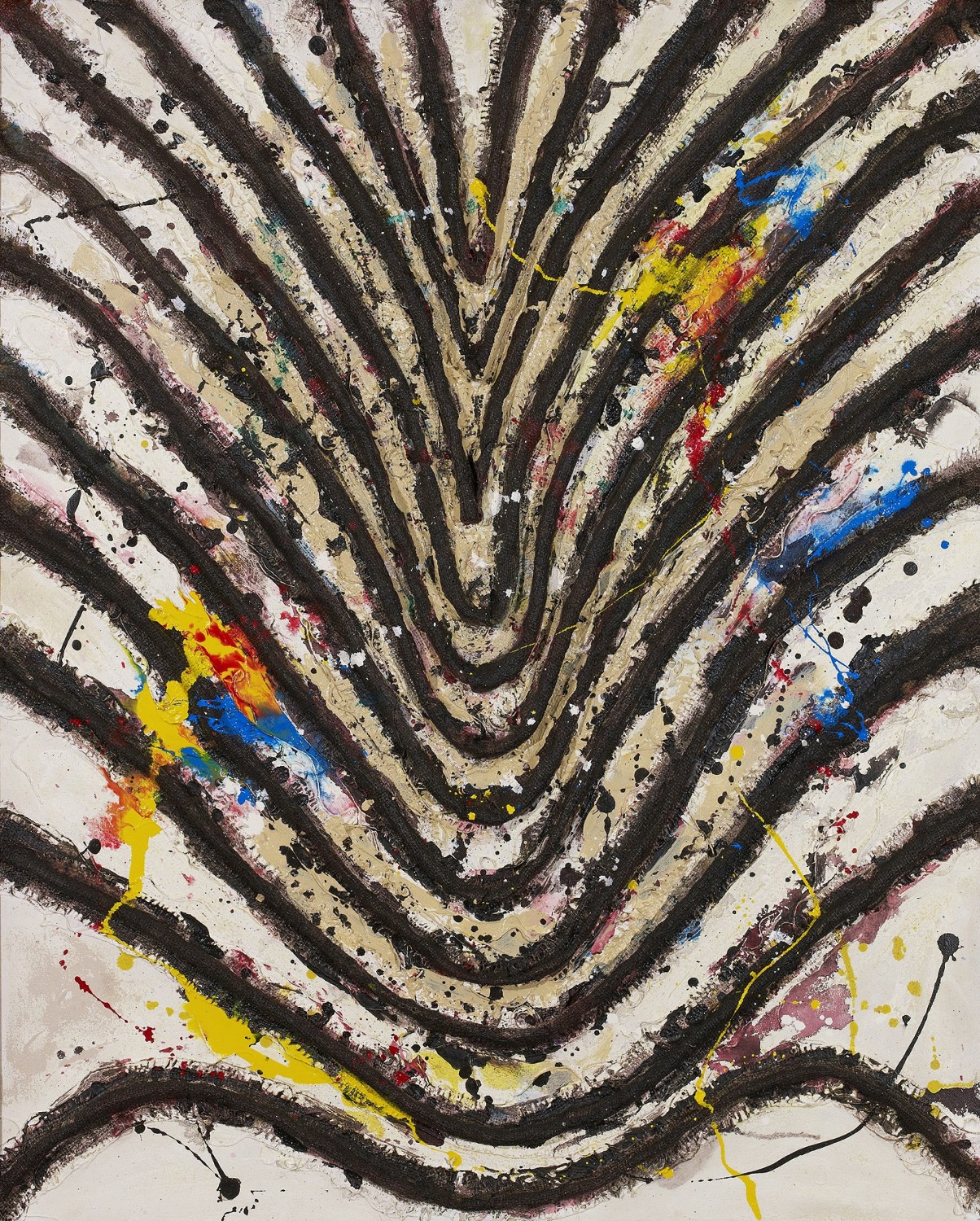In 1959, Tsuyoshi Maekawa took Gutai leader Jiro Yoshihara on as his mentor and exhibited in the 8th Gutai Exhibition. In 1962, he became an official member of the Gutai Art Association, as part of the group’s second generation, and remained a member until the group dissolved in 1972. Maekawa began using his signature material – burlap – in the early 1960s, and for decades he has cut, folded, torn, and painted on the coarse, yet fluid, material. Though aware of past artists who used burlap as a pictorial surface (ie: Paul Klee), Maekawa was more drawn to the abstract, expressive potential of the raw, utilitarian fabric. In Work 131018, Maekawa has stitched and folded the jute material, and the thickly painted folds take on a visceral, primordial quality. In Work 140620, the artist gently folds the work into a series of wavy, organic lines juxtaposed with pools and drips of vibrant color. The composition resembles patterns found in nature or geological formations, though Maekawa’s final work remains utterly abstract. In both works, Maekawa’s techniques generate a surprising number of textures and surfaces, with the burlap acting as both painterly support and sculptural relief. Continuing to work with burlap up to the present, Maekawa has said, “Like some of the other Gutai artists, once I found the basic techniques and materials that really seized my attention, I stuck with them and experimented with them over time to see how much I could find in and coax out of them.” Maekawa’s work has been the subject of solo and group exhibitions at Guggenheim Museum, New York; Fortuny Museum, Venice; National Museum of Art, Osaka; and Jeu de Paume National Gallery, Paris, among many others.

Tsuyoshi Maekawa
WORK 140620
2014
burlap and oil on canvas
39 3/8 x 31 1/2 inches